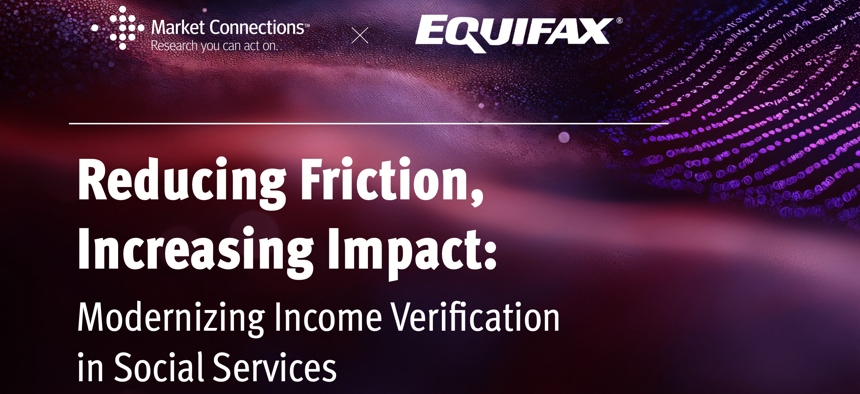sponsor content What's this?

Reducing Friction, Increasing Impact: Modernizing Income Verification in Social Services
Presented by
Equifax

Rapid changes in traditional workforce composition, a rise in alternate incomes, and reduced funding for social services are putting agencies in a squeeze as the systems and the people within them are stretched thin by insufficient resources and overwhelming demands. Caseworkers face rising caseloads, outdated tools, and complex eligibility determinations that often rely on time-consuming manual processes. These pressures not only delay benefits for eligible applicants but also erode the capacity of agencies to deliver timely, effective, and more equitable services.
At the same time, the Congressional reconciliation One Big Beautiful Bill Act (OBBBA)¹ is reshaping the landscape for social service agencies, introducing new requirements that significantly increase both financial and administrative pressures. Unless further changes are made, these requirements will cover a variety of factors. For Medicaid, OBBBA will mandate more regular address verification, monthly submissions of enrollee data to a federal system to identify duplicate participation, and the disenrollment of individuals determined to be residing in other states². Agencies will also need to check the Social Security Administration’s Death Master File quarterly to identify and remove deceased beneficiaries³. For SNAP, the requirements are equally challenging. For example, beginning in fiscal year (FY) 2029, states with a payment error rate (PER) above 10% will be required to cover 15% of their benefit costs – this is a new financial penalty that could drastically impact budgets already stretched thin4. Add to this an increase experts anticipate in state administrative costs, which will rise to 75% in FY26 from 50%, and the result is immense strain on an already burdened system5.
Against this backdrop, it is becoming clear that incremental fixes are no longer enough. Verification inefficiencies, once an administrative headache, now may threaten program integrity and financial stability. This white paper, based on a national survey of 250 federal, state, and county social service professionals and eight in-depth interviews, examines how secure, data-driven solutions can help agencies adapt to this new era—reducing friction for staff, improving experiences for applicants, and helping appropriately sized benefits get to eligible applicants.
1, 2, 3, 4, 5 One Big Beautiful Bill Act, H.R.1, 119th Congress. (2025)
This content is made possible by our sponsor Equifax; it is not written by and does not necessarily reflect the views of GovExec’s editorial staff.
NEXT STORY: Cribl Advances Toward FedRAMP® Authorization, Raising the Bar for Public Sector Data Security






